Tech Talk
Forum home - Go back to Tech talk
|
1939 STC 633 Console ... original dealer conversion for DC mains (?)
|
|
|
Return to top of page · Post #: 1 · Written at 6:36:23 PM on 30 August 2018.
|
|
|
|
Location: Mount Lawley, WA
Member since 12 September 2017 Member #: 2167 Postcount: 49 |
|
I've had this console since the early 90's when I bought the contents of an old radio shop in country WA. 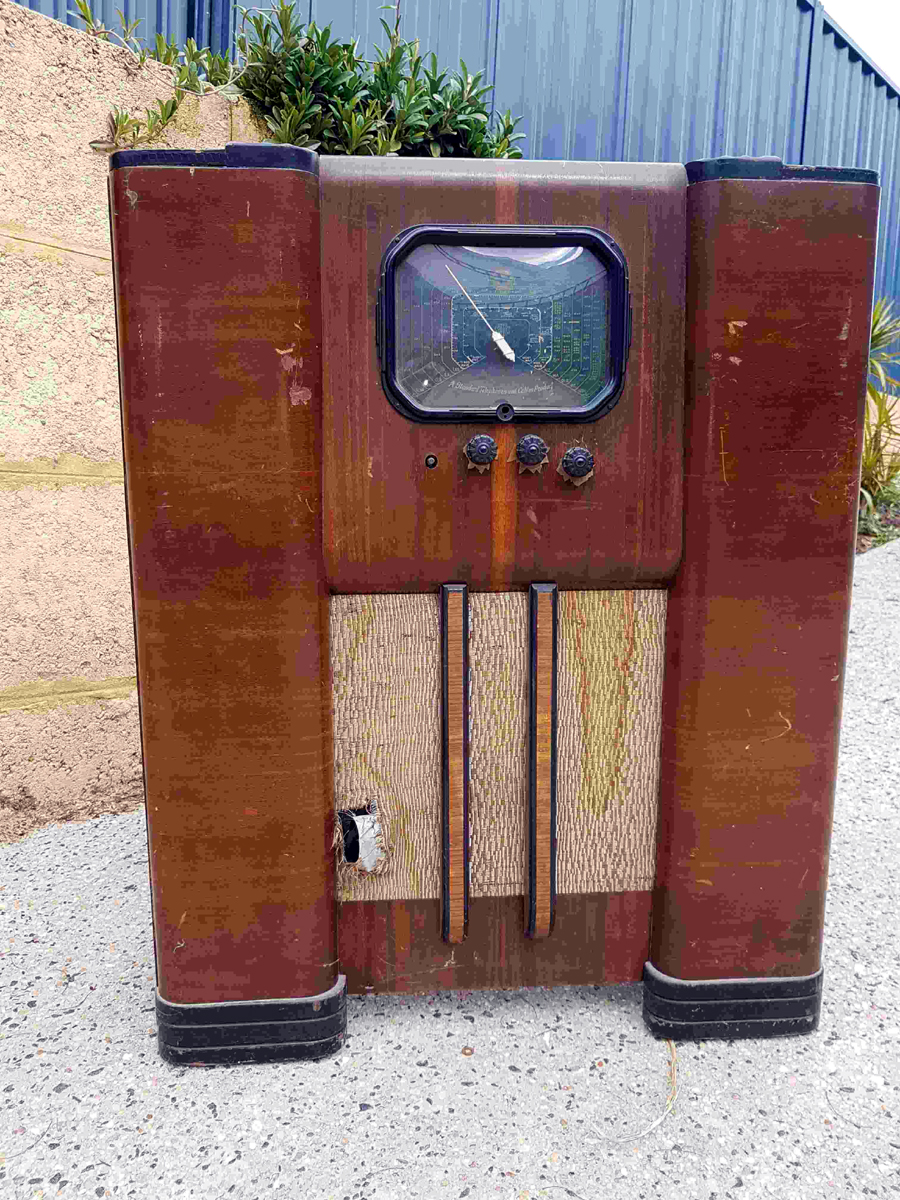 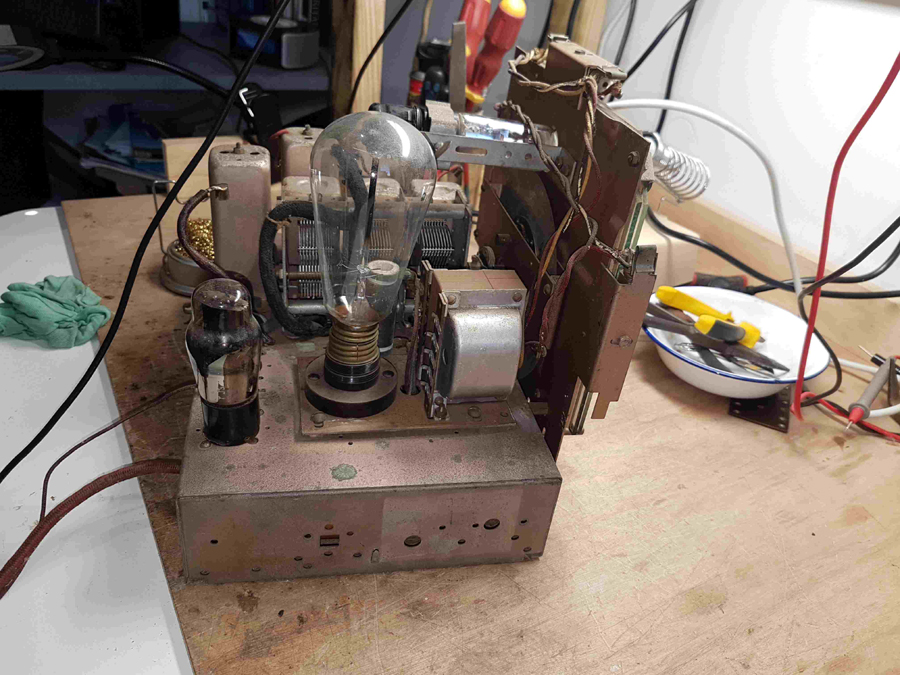 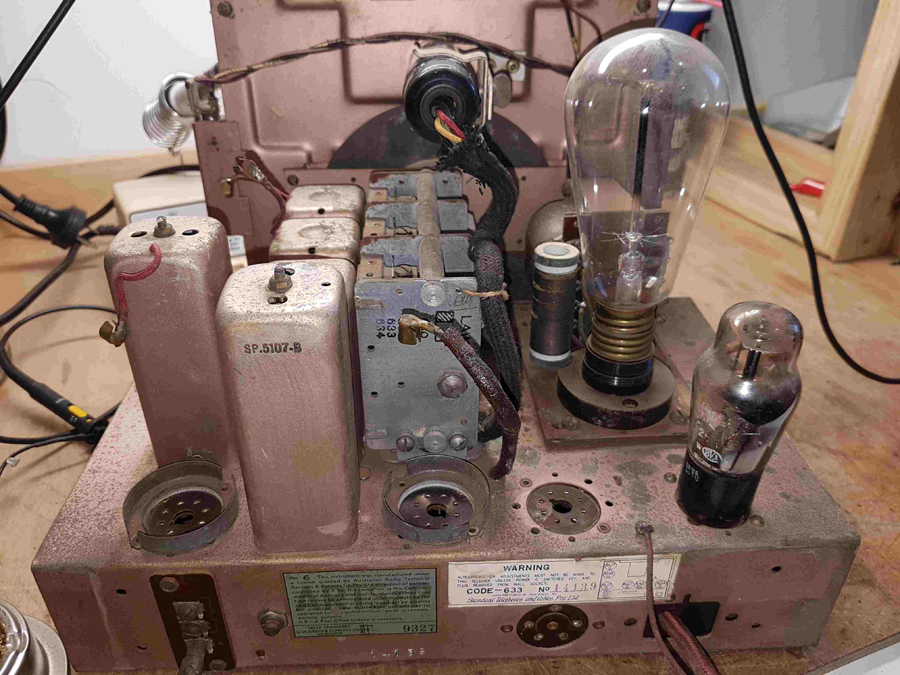 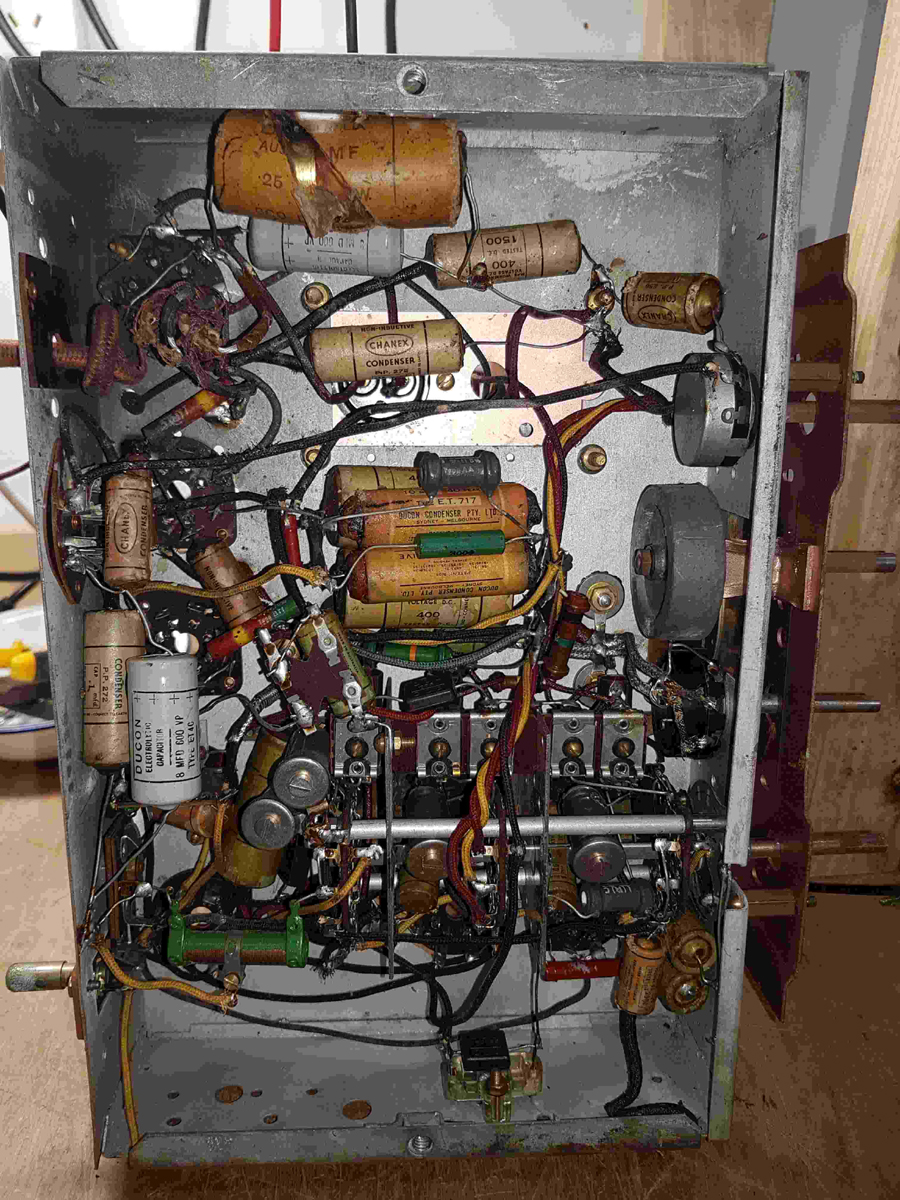 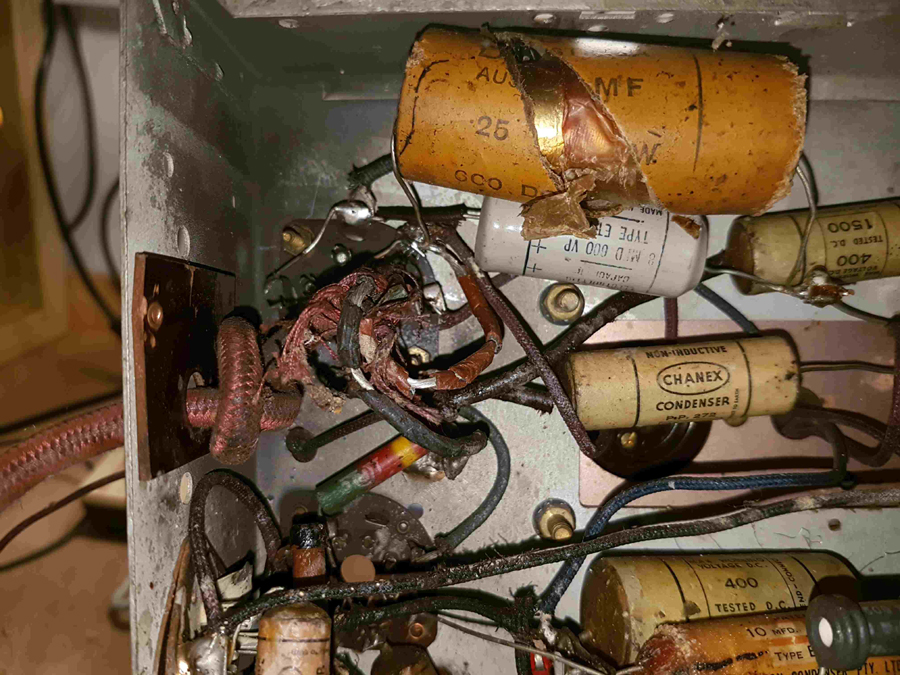 |
|
|
Return to top of page · Post #: 2 · Written at 7:45:06 PM on 30 August 2018.
|
|
|
|
Location: NSW
Member since 10 June 2010 Member #: 681 Postcount: 1370 |
|
Hello Nhanwell |
|
|
Return to top of page · Post #: 3 · Written at 9:13:07 PM on 30 August 2018.
|
|
|
|
Location: Mount Lawley, WA
Member since 12 September 2017 Member #: 2167 Postcount: 49 |
|
Hi STC830 |
|
|
Return to top of page · Post #: 4 · Written at 8:48:41 AM on 31 August 2018.
|
|
|
|
Location: NSW
Member since 10 June 2010 Member #: 681 Postcount: 1370 |
|
One thing to look out for is that there can be a 1Mohm resistor in the socket of these old indicator valves which will likely be high. |
|
|
Return to top of page · Post #: 5 · Written at 10:34:38 AM on 31 August 2018.
|
|
|
|
Location: Mount Lawley, WA
Member since 12 September 2017 Member #: 2167 Postcount: 49 |
|
I've had a good look at the magic eye this morning. Its most likely a 6T5. The face doesn't look at all like a 6U5. No "horizontal" line across the target. |
|
|
Return to top of page · Post #: 6 · Written at 9:01:08 PM on 2 September 2018.
|
|
|
|
Location: Mount Lawley, WA
Member since 12 September 2017 Member #: 2167 Postcount: 49 |
|
A very productive weekend .. rewired the set back to parallel heater chain, replaced all the wax capacitors - not a single one measured close to spec and more than 80% were (very) leaky. All the resistors were within tolerance! . Amazing how much more stable resistors from 1939 are compared to those from the mid 30's. A credit to improved techniques in just a few years. |
|
|
Return to top of page · Post #: 7 · Written at 9:27:29 PM on 2 September 2018.
|
|
|
|
Location: Sydney, NSW
Member since 28 January 2011 Member #: 823 Postcount: 6882 |
|
Another pleasant surprise .. it was still bright enough to see in a lit room |
|
|
Return to top of page · Post #: 8 · Written at 10:19:00 PM on 2 September 2018.
|
|
|
|
Location: Wangaratta, VIC
Member since 21 February 2009 Member #: 438 Postcount: 5595 |
|
Wrong thought! |
|
|
Return to top of page · Post #: 9 · Written at 7:12:19 AM on 3 September 2018.
|
|
|
|
Location: NSW
Member since 10 June 2010 Member #: 681 Postcount: 1370 |
|
"Another pleasant surprise .. it was still bright enough to see in a lit room" |
|
|
Return to top of page · Post #: 10 · Written at 4:17:43 PM on 4 September 2018.
|
|
|
|
Location: Mount Lawley, WA
Member since 12 September 2017 Member #: 2167 Postcount: 49 |
|
Thanks Marc, always appreciate your comments. |
|
|
Return to top of page · Post #: 11 · Written at 7:36:46 AM on 5 September 2018.
|
|
|
|
Location: Toongabbie, NSW
Member since 19 November 2015 Member #: 1828 Postcount: 1379 |
|
Nigel, thanks for the original photos! |
|
|
Return to top of page · Post #: 12 · Written at 9:49:16 AM on 5 September 2018.
|
|
|
|
Location: Wangaratta, VIC
Member since 21 February 2009 Member #: 438 Postcount: 5595 |
|
It could be that someone was savvy to the ramifications of changing to 6V6 and did it. The lower ohm Rk was probably right for the original valve. |
|
|
Return to top of page · Post #: 13 · Written at 10:08:07 AM on 5 September 2018.
|
|
|
|
Location: Mount Lawley, WA
Member since 12 September 2017 Member #: 2167 Postcount: 49 |
|
Thanks Fred. |
|
|
Return to top of page · Post #: 14 · Written at 6:39:32 AM on 8 September 2018.
|
|
|
|
Location: Oradell, US
Member since 2 April 2010 Member #: 643 Postcount: 835 |
Well, borrowing from today's technology, one could build a vacuum tube version of a switching power supply. A power tube or two, and another tube as the oscillator and some form of voltage regulation via a feedback loop. TV sets did something like this with the horizontal output, using portions of that to generate the very high voltage for the picture tube, and some boosted B+. On the "cold" side, maybe use filament tubes to reduce power demands off this switching power supply. (heater-cathode insulation isn't good enough to isolate the powerline/mains from a cold chassis). Or figure you can get away with your chassis being tied to your electrical ground (that happens to be positive) and use a series heater string. And you might be able to connect your RF output stage tube directly to the negative hot line (if you're careful), using an RF coupling transformer to get from the "cold" oscillator and modulator circuits to the "hot" RF output tube. The hot negative line would be the "ground" for this tube. And then another RF coupling transformer or cap to feed the antenna. The heater of the RF output tube(s) could be connected to the other end of the series heater string for the tubes of the "cold" circuits (which get their B+ from the switching power supply). Hot negative 220VDC------^--^----dropping resistor----^--^--^--^----positive ground ............. heaters of: ... RF output ...................... cold oscillator and such The switching power supply ^ heaters could also be adjacent to the RF output tube heater. |
|
|
Return to top of page · Post #: 15 · Written at 9:37:54 AM on 8 September 2018.
|
|
|
|
Location: Wangaratta, VIC
Member since 21 February 2009 Member #: 438 Postcount: 5595 |
|
One must exercise caution with tube sets & switch mode power supplies. I have had them get into the IF & are generally worse than the vibrator type to clean. I also noted on a Guitar Amp.(100W RMS solid state) with one, that if any cable was run near the back of it; that cable would fall foul of the Switch mode PSU |
|
|
You need to be a member to post comments on this forum.
|
|

Sign In

Vintage Radio and Television is proudly brought to you by an era where things were built with pride and made to last.
DISCLAIMER: Valve radios and televisions contain voltages that can deliver lethal shocks. You should not attempt to work on a valve radio or other electrical appliances unless you know exactly what you are doing and have gained some experience with electronics and working around high voltages. The owner, administrators and staff of Vintage Radio & Television will accept no liability for any damage, injury or loss of life that comes as a result of your use or mis-use of information on this website. Please read our Safety Warning before using this website.
WARNING: Under no circumstances should you ever apply power to a vintage radio, television or other electrical appliance you have acquired without first having it checked and serviced by an experienced person. Also, at no time should any appliance be connected to an electricity supply if the power cord is damaged. If in doubt, do not apply power.
Shintara - Keepin' It Real · VileSilencer - Maintain The Rage


 250V plate 6AG6 draws around 38mA plate plus screen; grid 1 -6V. 6V6 plate plus screen at max 52mA; grid1 -12.5V.
250V plate 6AG6 draws around 38mA plate plus screen; grid 1 -6V. 6V6 plate plus screen at max 52mA; grid1 -12.5V. .
.